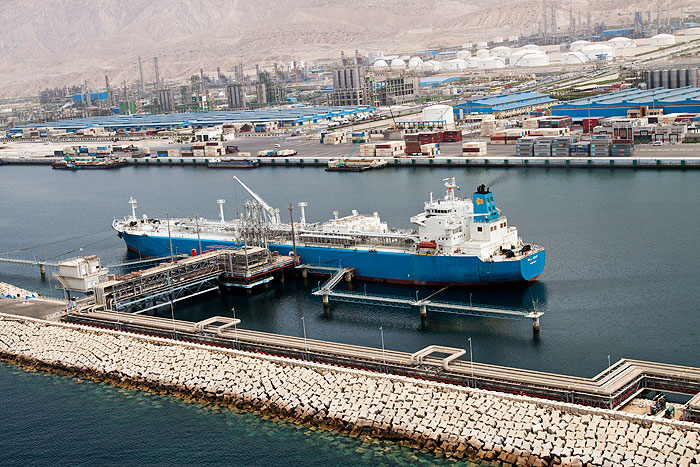Speaking to Shana, Ali Mohammad Bossaqzadeh, the director of projects at the National Petrochemical Company (NPC), says all the country’s petrochemical storehouses are empty indicating that the produced items are being sold and the exports are continuing despite the sanctions.
Shana: What projects are prioritized this year?
Bossaqzadeh: According to NPC’s plans, by the end of next Iranian calendar year to March 2021, 18 projects will be launched, including Kaveh Methanol Project, Phase I of Bushehr Petrochemical Complex and Ilam Petrochemical Plant's Olefin Unit. Moreover, 15 other projects including Miandoab Petrochemical Plant, Kimia Pars Middle East Plant, Lordegan Fertilizer Plant, Persian Gulf Bidboland Gas Refinery, Ebn Sina Petrochemicals Company, Arta Energy Methanol Plant, Sabalan Petrochemical Plant, the first phase of Pad Jam ABS Polymer Plant, Kangan Petro-refinery, Sepehr Parsian Refinery, Dey Aria Polymer Plant, Hengam Petrochemical Plant, Pars Phanal Plant, and Aryan D-polymer Plant will be launched by the end of next calendar year. The National Petrochemical Company will do its utmost to implement these projects, and has held various meetings with Iranian Minister of Petroleum Bijan Zangeneh in this regard.
Shana: What is the amount of investment of these projects?
Bossaqzadeh: The total investment of these 18 petrochemical projects is $13.3 billion, which will add 28 million tons to the country's annual petrochemical production capacity. Besides the amount of investment of the three projects that will come on stream this year is roughly 1.5 million euros, which will add about 7 million tons to the country’s petrochemical production capacity. These projects will add to the diversity of petrochemical mix of the country and it would no longer have to import a number of the items. Right now, we can produce 60 to 70 petrochemical items inside the country which will reach 300 once all these 18 projects come online.
Shana: Given that the global marketplace is saturated with methanol, is investment in this sector still lucrative?
Bossaqzadeh: Before answering this question, I ought to say that methanol is produced from various feedstock including natural gas or methane, liquefied petroleum gas (LPG) (propane or butane), gas condensate or naphtha, crude oil and coal, and depending on the type of feedstock, the price of the finished product is also different. The cheapest methanol production feedstock is methane, and the production of methanol from natural gas or coal can add up to three times the price of the product. Iran holds the world's largest gas reserves, and it has the advantage of producing methanol by methane which puts it in an advantageous stance in comparison with China, Europe or the United States, which use coal, crude oil and shale gas, respectively, to produce methanol.
Given the freedom of methanol exports in terms of tonnage, if the production of methanol is increasing in the market, it is logical to squeeze those producers with higher production costs out of the market, creating an advantage for Iran in the market.
In addition, the methanol chain needs to be completed to reduce global shocks of the item’s supply in the market. It is true that methanol can also be used for fuel, but it can be converted into ethylene, propylene, MTBE, mono-styrene, or other items. As a result, we must take steps to complete the methanol production chain inside the country.
For this reason, the National Petrochemical Company, since 4 or 5 years ago, is granting not only methanol production plants but also GTX (GTO or GTP) licenses to developers which have so far led to 18 projects.
Shana: How do you see the future of methanol marketing?
Bossaqzadeh: Bearing in mind the consumption growth, Iran's methanol production will rise to more than 25 million tons over the next four years, while the output of China and the United States will be even more. As a result, we can see some fluctuations with the inauguration of any methanol production unit, however, the price trend will again be fixed. So, given that the price of this product in Iran is lower than other countries, methanol will have a fairly good market for Iranian producers, and we can more easily compete with other suppliers.
Shana: How have US sanctions impacted the petrochemical sector?
Bossaqzadeh: The boycotts do increase the costs of transport, logistics and currency exchange or consumables by about 10 to 15 percent initially, which reduces the profitability of exports. Fortunately, the petrochemical industry has not had a serious problem with exporting products, and exports are continuing.
After the initial sanctions were imposed, we were shocked because 70% of our products were shipped with rented vessels but now Iran has purchased several high quality vessels to export petrochemicals.
Fortunately, this year, we have had no stoppage in exports at all; there might have been occasional reduction in exports but after a short period, conditions have stabilized and improved.
Currently, many of the catalysts and raw materials needed by the petrochemical industry are provided by domestic private companies and only few of them are imported.
Petrochemical products are not like crude oil to do have special uses for specific purposes. These products can be used in all countries and in various fields because of their high consumption variability. Therefore, the petrochemical industry is not an industry which can be easily targeted by the sanctions.


Your Comment